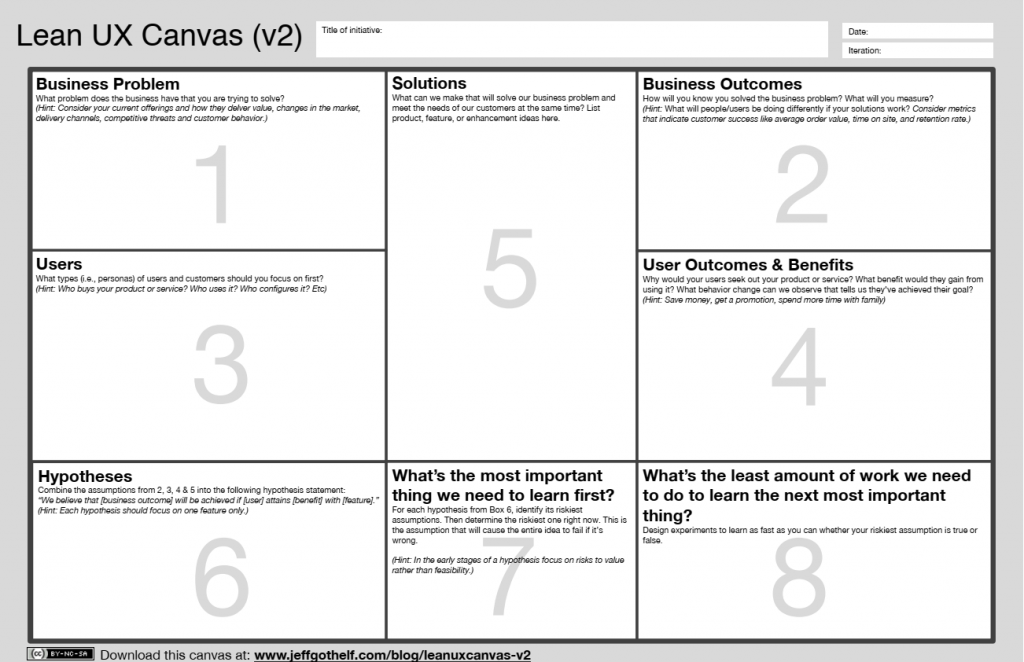To create solutions and experiences that are appealing and useful, product teams must have clarity on what problem they are solving and whom they are solving it for. The more clarity they have on these things, the better the outcome will be.
The Lean UX Canvas is a tool created by UX consultant Jeff Gothelf, that acts as a practical guide to both understand the current scenario of business and user needs. It also helps in creating hypotheses to validate via research.
Although this tool is excellent for companies at any level of UX maturity, in my opinion, it is especially relevant for companies who are new to UX and want an uncomplicated tool to start doing ‘UX activities’ (as many companies with low UX maturity see UX as a standalone activity).
UX research & design require a lot of listening, observing, prototyping, testing and taking feedback that is quantitative and qualitative from users. The Lean UX Canvas allows teams to focus on business problems, business outcomes, user personas and their benefits and convert these assumptions into hypothesis. And finally, it guides to design research to test the most critical hypotheses.
Benefits of Lean UX Canvas:
- It helps in starting user-centric conversations about the work the team is doing.
- It facilitates to have the same understanding of what they are solving and whom they are solving it for.
- It gives the team more clarity on which direction to take.
- It guides the team through the current business landscape, so they can identify areas that may need more clarification.
How to use the Lean UX Canvas
Lean UX Canvas is excellent for Research and Planning phase of a project, especially during the discovery phase of the project. The process of completing a Lean UX Canvas is straightforward. Each section is numbered from 1 to 8, along with a description of what information to fill in.
After filling the Lean UX Canvas
Once the canvas is filled, we can get started on validating some of the assumptions we have. In case there are many solution ideas dependent on a particular assumption, it’s important to mark this assumption a priority and test it first. If it is proven to be valuable, then those solution ideas can be picked for further evolution. If not, then remove those ideas from the scope of work and carry on validating other ideas listed in the canvas. The goal is to learn and validate the listed assumptions so that we have a clear direction a product should take, removing risks and unwanted ideas as we move forward. In the end, we should have a better understanding of what can be done to continue building a solution that is right for the business and the users.
The next step
Ethnity is a UX research company, providing tailored UX research services to suit your organisation’s need. If you are working on a digital product/service and would like assistance with user research, drop us a line to hello@ethnity.com. We help companies understand their users and provide clear, actionable recommendations that deliver business results.








